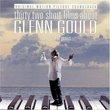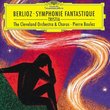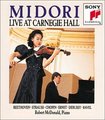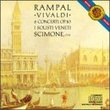| All Artists: Sergey Rachmaninov, Vladimir Ashkenazy, Royal Concertgebouw Orchestra Title: Rachmaninov: The Isle of the Dead Op.29/Symphonic Dances Op.45 Members Wishing: 1 Total Copies: 0 Label: Decca Release Date: 10/11/1991 Genres: Dance & Electronic, Classical Styles: Forms & Genres, Theatrical, Incidental & Program Music, Historical Periods, Modern, 20th, & 21st Century Number of Discs: 1 SwapaCD Credits: 1 UPC: 028943073325 |
Search - Sergey Rachmaninov, Vladimir Ashkenazy, Royal Concertgebouw Orchestra :: Rachmaninov: The Isle of the Dead Op.29/Symphonic Dances Op.45
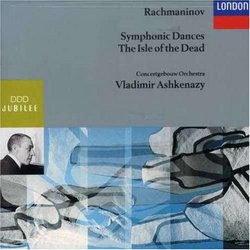 | Sergey Rachmaninov, Vladimir Ashkenazy, Royal Concertgebouw Orchestra Rachmaninov: The Isle of the Dead Op.29/Symphonic Dances Op.45 Genres: Dance & Electronic, Classical
Sergei Rachmaninoff (1873-1943) produced in 1909 one of this century's most enduring tone poems in The Isle of the Dead. Based on a gloomy painting by Arnold Bocklin (reproduced on the cover of this London CD), it manages ... more » |
Larger Image |
CD DetailsSynopsis
Amazon.com Sergei Rachmaninoff (1873-1943) produced in 1909 one of this century's most enduring tone poems in The Isle of the Dead. Based on a gloomy painting by Arnold Bocklin (reproduced on the cover of this London CD), it manages to incorporate many of the musical fads of the day without sounding at all faddish. You can hear bits of Wagner and Mahler; but you can also get a whiff of Debussy's Impressionism and a dollop of Scriabin. At the opposite end of the spectrum is Symphonic Dances (1940), a thoroughly joyous orchestral work. Get this for the clarity of the music and the Bocklin cover. --Paul Cook Similarly Requested CDs
|
CD ReviewsDark "Isle" - Glittering "Dances" Bruce Hodges | New York, NY | 04/24/2002 (5 out of 5 stars) "This is a sensational recording of two of Rachmaninov's best works. "Isle of the Dead" is written in 5/4 meter, creating the effect of a boat gently rocking on the water. From the opening haunting bars, the music rises and falls in sinister waves to its dramatic climax. Rachmaninov has captured the Bocklin painting with a sound world that is totally compelling.Ashkenazy's version of the "Symphonic Dances" is notable for its energy; with greater urgency and forward momentum, he gives the music even more sparkle as well. The third movement opens with a thrilling fortissimo burst from the orchestra, and the tension steadily increases until the final sharp, hair-raising chords that bring the piece to its brilliant end. The recording is excellent, with the resonance of the Concertgebouw captured beautifully. Among recent versions of the "Dances," I own the excellent Eiji Oue/Minnesota Orchestra performance - a demonstration-quality CD on Reference Recordings. But Ashkenazy is even deeper inside the soul of the music, and further, brings each piece a refreshing clarity.Two gorgeous scores brought to life with passion, tremendous orchestral playing, and vivid sound." Ashkenazy's best Rachmaninov on disc a Rakhmaninov junkie | Woodstock, Vermont | 11/23/1999 (5 out of 5 stars) "I just went to my shelf to retrieve my copy of this disc when, to my dismay, I see that it is missing. Given that it is one of my favorite CDs in my collection (2,000 and growing), I must have laid it in another room. The other reviewer sings the praises of the Symphonic Dances. Ashkenazy's handling of the Isle of the Dead is no less magical. His delay at the climax of the second theme is breathtaking, and the handling of the Dies Irae canon verges on the mystical. That same elasticity comes into play with the Symphonic Dances. The second movement in particular benefits from the fact that Ashkenazy treats it *as* a dance: one can feel the give and take between the partners of conductor and orchestra.Since I cannot find the one disc, I'm taking this opportunity of ordering a second ... and in letting others know that this disc -- now at mid-price! -- is a must-have." An undervalued tone poem. p.meguire@econ.canterbury.ac.nz | 09/14/1998 (4 out of 5 stars) "I first heard the Symphonic Dances performed by the North Carolina Symphony, backing the North Carolina Ballet. I was in the auditorium expecting to see only the Rite of Spring. I had not even noticed that the Symphonic Dances were on the program, because I had never heard them, or even heard of them before. Nevetheless, I found myself entranced by Rachmaninoff's supremely virile orchestration, as well his surprising command of Tchaikovsky's idiom. This very late work of his (his last opus number, I believe) is also the one where he finally assimilated the innovations of Stravinsky and perhaps Prokofiev. This is a brash work, driving work by what one would think would be a youthful composer. The execution on this record strikes me as competent, although others should speak to this before I do.The composer also completely transcends his background as a virtuoso pianist, writing exclusively for orchestra. Let me be emphatic: this is not a disguised piano concerto, nor is it a symphony on the cheap.I have been a classical music buff since childhood. My wife and I belong perform in an oratorio society and a chamber choir. She used to be a violinist. Yet neither of us had even heard of Rachmaninoff's Symphonic Dances until we were both about 40 years of age. The themes were not familiar to us from decades of listening to classical FM stations. I conclude that this work is seriously undervalued, even in the USA, the land where it was composed, and where the composer died shortly thereafter."
|

 Track Listings (4) - Disc #1
Track Listings (4) - Disc #1